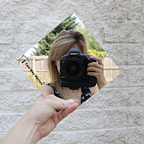Transparent Wood
The window of the future
We have glass that is transparent, air, water, and plastic. The list really goes on and on with transparent objects. But what if…. what if we made a more compound object transparent? Scientists have recently discovered that you in fact can make wood transparent.
The term transparent comes from around 1400, coming from the Medieval Latin Verb transpārēre, which simply means “to show through”. Wood was on the Earth long before we were, making wood ancient. Now, you may be thinking “Transparent Wood? What”. I am right there with you, but here we are and I am going to dive into all of it.
Who thought of it first?
In 1992, Siegfried Fink first turned wood transparent to be able to study the structure very specifically. It wasn't until recently, 2015–2016, that his work was discovered by a few teams at the Swedish KTH Royal Institute of Technology.
What is wood made of?
According to explainthatstuff, wood is made of two different blocks of wood. The first layer under the bark is a thin layer called sapwood. This layer helps the tree supply water and nutrients. The next layer is called Heartwood, now this is actually dead. This is “where the xylem tubes have blocked up with resins or gums and stopped working”. Where the tree actually grows giving the tree the annual rings that can show how old the tree is, this is the cambium.
Benefits of transparent wood
“Wood is one of the strongest, renewable, and most versatile building materials around”. With wood being transparent, it is now capable for replacing glass installations. With this in mind, glass is a very poor thermal insulator, as well as being an overall weak material. If you drop a piece of glass and a piece of wood next to each other, which will break? The glass.
With transparent wood, windows can be replaced which will allow the use of fewer frame elements.
“So many structures built today rely on the use of glass and steal. By replacing building materials with the transparent wood, the world of design could be revolutionized while heating costs and fuel consumption rates are simultaneously reduced.”
How is it made?
Wood isn't transparent because of the lignin and cellulose, which absorbs light. The material that makes the wood a brown color is from the light activated compounds — chromophores. Now, what if you wanted to make the wood see through? It is just a few simple chemicals, almost like when bleaching your hair — hydrogen peroxide. What this does is it “modifies the chromophores, changing their structure so they no longer act to absorb light and color the wood.”
Much like our skin, we have pores everywhere on our body, and so does wood. If you fill these pores with these chemicals then you can achieve a lighter brown wood. Place the wood in the sun or under a UV light, then the wood would turn white. By chemically removing the lignin, it makes the wood see through more than ever. Scientists are finding it easier to apply clear epoxy to the wood for more of a see through effect, though this is not as eco-friendly. Adding the epoxy to the pores of the wood, will make it stronger, much stronger.
Making transparent wood
Pros & Cons
Just like any type of scientific research, there are always pros and cons.
Pros:
- Much stronger than glass
- Better biodegradable material when compared to plastic
- Can be used to create strong and energy efficient windows
- Will be better in the long term for solar panels and for the weather changes
- It is better for installation (Did you mean insulation or installation?)
Cons:
- If epoxy is used to make the wood stronger, it is not as environmentally friendly as it could be.
- It will be difficult to mass produce as each part of the wood develops in different time frames.
We will only know more once more research is done. Will Transparent Wood become the new glass of the future? Only time will tell.
